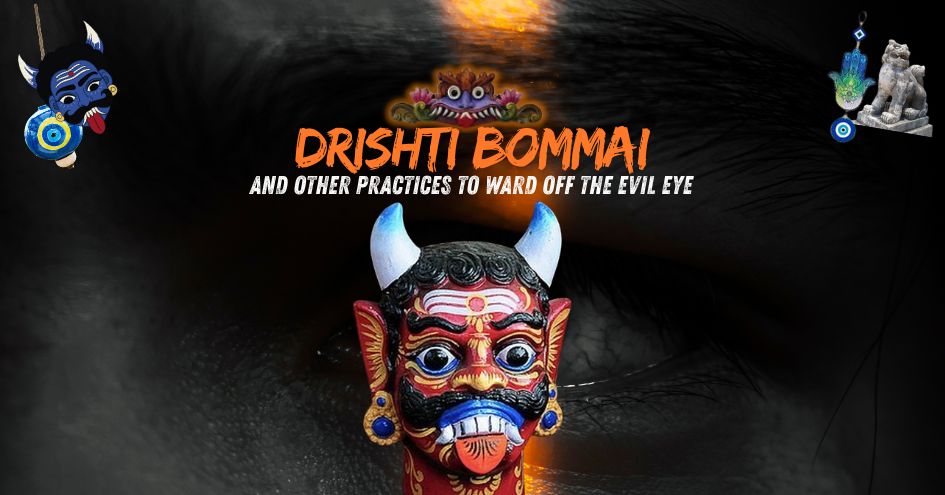
Have you noticed daunting doll faces staring at you from terraces of houses or construction sites as you stroll around the neighbourhood? Or noticed the same Asura -like faces painted onto lorries/buses, gazing at you during your road trips? Well, these painted doll faces/ masks are commonly known as Drishti Bommai in Tamil Nadu. They have many names in different languages - Drishti Gomme (in Kannada) and Drishti Bomma (in Telugu).
One often wonders if these dolls and masks are relics from an old era or superstitious beliefs and if these dolls have a purpose even in these modern times.
Well, Bharath follows many age old traditions and practices. Each practice is rooted firmly in logic, well-being and common sense. One such intriguing habit is the customary placement of the Drishti Bommai atop terraces of homes, construction sites and vehicles. These dolls or Bommais are typically made of materials such as wood or clay. They are neither Gods nor idols. The Drishti Bommai are fearsome looking masks / doll heads with enormous bulging eyes, an open mouth with long white teeth and a red tongue sticking out ( sometimes with a dark scorpion on it). These intimidating dolls are brightly painted and some come in black colour as well. They act as a talisman and help ward off the evil eyes or Buri nazar.
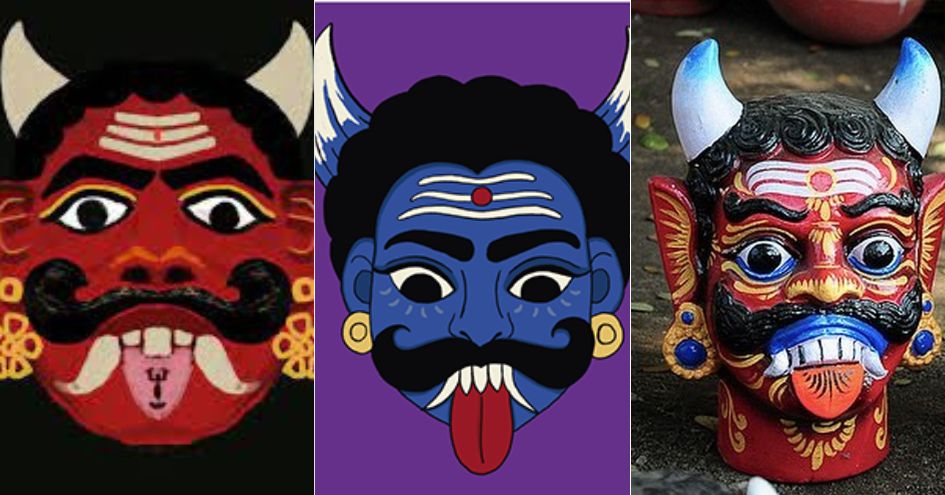
Significance of the Drishti Bommai
A thought and how it can change one’s life are widely discussed in modern times. In ancient Bharath, our elders believed that every intense thought generate either a positive or a negative vibration. These vibrations gets transferred to the person being looked at. A thought arising out of joy generates a positive effect whereas intense and focused thoughts arising out of jealousy, envy or malice generates a negative vibration. This negative vibrations in turn affect the overall well being of a person ( being looked at).
When a Drishti Bommai is placed on a beautiful building , the thoughts of envy and evil intent is redirected at the Bommai placed ( as it is the first thing one notices). Thus, the person’s envious thoughts on the beauty of the building takes a back seat.
Also, these bommais are placed on the terraces. They stare intently and the young children unconsciously keep away from the terraces. The stares of these dolls are so intense that even grown ups pause and have a feeling that they are being watched.

A Newcastle University conducted a study and published the reports in December 2015. They found that people care what other people think about them. They behave better and are often more honest when they feel they are being observed. A simple act of placing staring eyes with the caption “ You are being watched” reduced anti social activities like cycle theft or littering.
Hence one could say that the Drishti Bommais are the CCTV cameras of the ancient times.
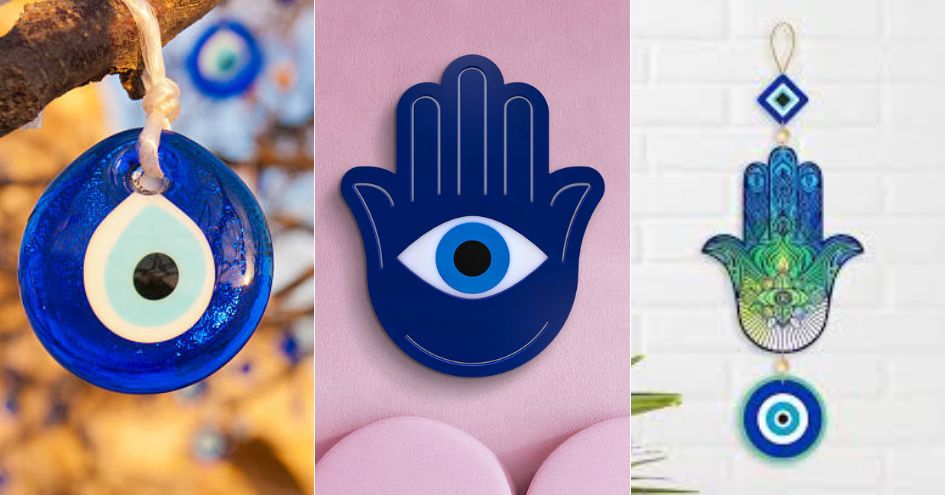
Other practices to ward off the evil eyes
Apart from placing the Drishti Bommai, Indians have many other traditions and practices to ward off the evil eye and the negative vibrations. In fact, the Atharva Veda contains many charms and mantras that can be chanted to heal and to protect oneself. Usually amulets, threads, charms and yantras are energised through chants as old as the Vedic ages.
Wearing black thread around wrists is also a common practice. These threads are powerfully charged with mantras and are filled with positive vibrations as they are primarily available from temples. When worn, they give the wearer protection.

Nimbu Mirchi ( lemon and green chillies) is one of the most conspicuous practices to ward off the evil eye. A string of seven green chillies are tied together along with a lemon at the bottom and this is hung in the entrances of home or sometimes even on cars and lorries. The combination of lemon and mirchi soak in the negative vibrations that are directed towards the object it is tied to. The smell arising out of this also keeps insects at bay. Once every week they are discarded and fresh ones are replaced.
The black dot ( Kaala Thika) on the foreheads or cheeks of infants is deliberately made to make the child appear less perfect. This black dot diverts the evil eye. This practice is rooted in the endearing tradition of parental love and protection.
In Bharath, salt isn’t used only for cooking; it is also used to remove evil eyes. If a person is feeling tired, ill or has been the centre of attention, the elders in the household know that such a person attracts negative vibrations. They take a fistful of rock salt and move it around the person’s head and body ( clockwise & anticlockwise) while chanting soft prayers. Once done, the salt is discarded into fire, running water or thrown into a secluded area. The negative vibrations are absorbed by the salt and gets discarded away along with it.
The concept of evil eye and protection is not something that is specific only to India. Different cultures from across the world have similar beliefs and practices as well.
In order to thwart the evil eyes, the Turkish people created “Nazar Boncuk - an amulet to keep evil spirits at bay. People wear it as a bracelet , pendant or simply hang it on their precious possessions. The amulet is made out of coloured ( mostly blue, yellow and black ) glass beads.
The belief that someone can catch the evil eyes curse or Matiasma from someone else’s jealous thoughts are deeply ingrained in Greek culture as well.
In Thailand, miniature spirit houses or San Phra Pham serve as homes for the guardian spirits. These miniature dwelling houses act as homes for the protective guardian spirits ( who originally owned the land before the people built their houses on land). People offer food, water and flowers to appease the spirits and to bring good fortune.
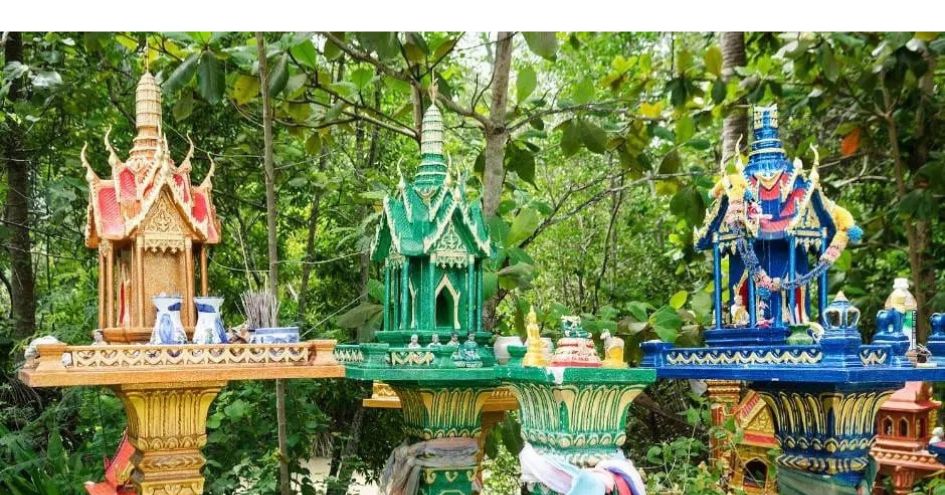
In China, traditional stone lions known as shi shi ( Chinese guardians) are placed either side of the entrances to Chinese temples and homes. They are believed to bring good fortune and protect against evil eyes.
In Japan, an Okinawa guardian figure called as Shisha stands guard at the entrance and rooftops. They resemble a cross between a lion and a dog. They ward off evil spirits and bring good fortune.
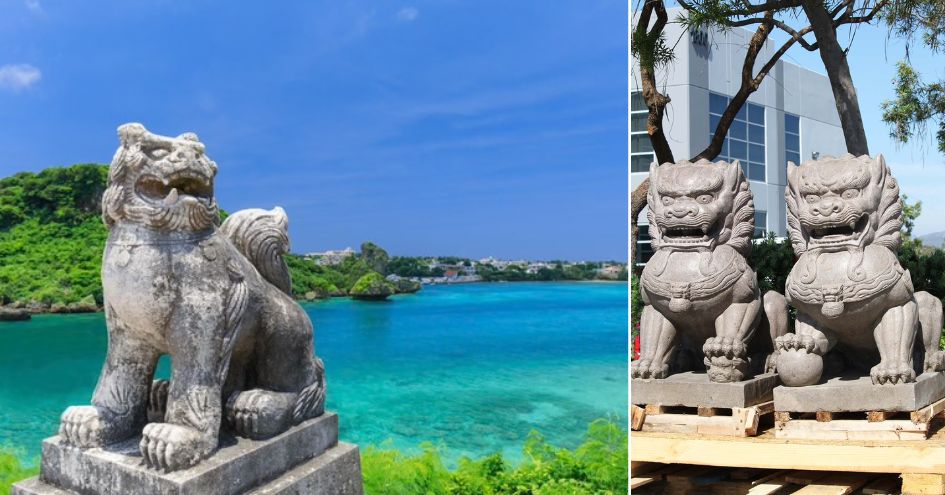
In parts of Middle East and North Africa, a palm shaped amulet called Hamsa is very popular. This is used as jewellery or as a wall hanging and it provides defence against evil eyes.
In the Andean culture, people always appeased the spirits to keep them in good books. They offered cocoa leaves, grains and sweets so that the spirits will protect the people from bad things happening to them.
Although the culture of warding away the evil eyes is prevalent in modern times throughout the world, slowly, in the name of urbanisation and aesthetics, these dolls are being either re-designed ( getting a makeover) or replaced for other charming and beautiful objects.
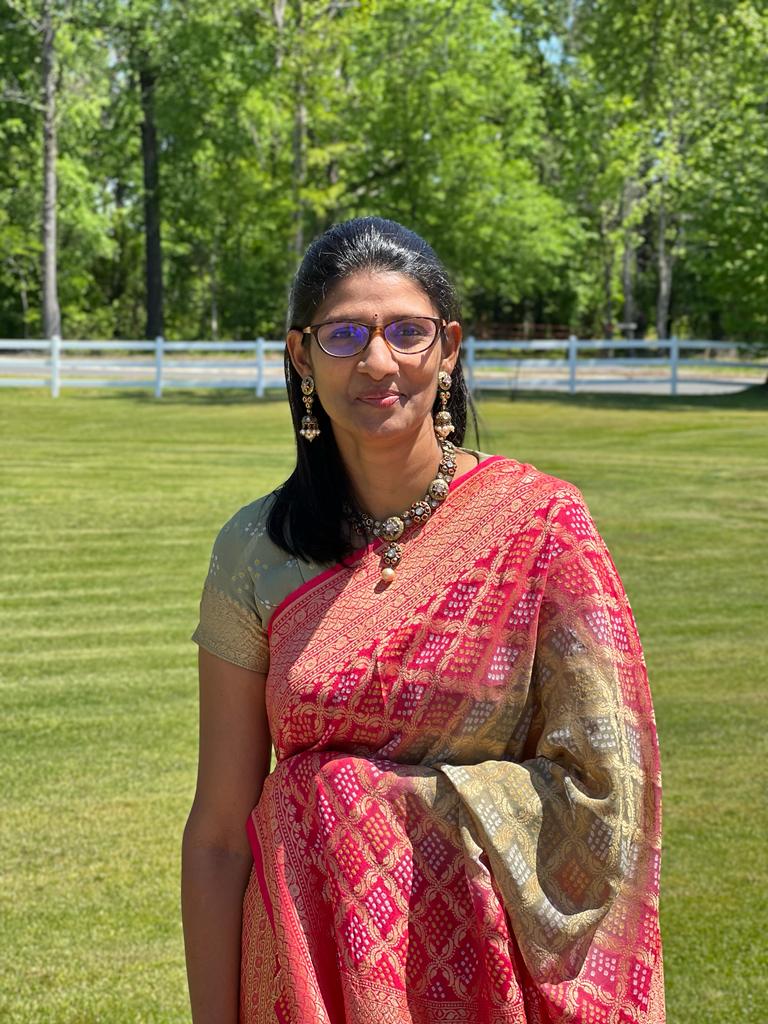 Vaishnavi Gurusankar is a passionate educator, a wife and a mother. She has over a decade of experience as an educator and has been closely working with teachers and children of all ages. She is also an active parenting blogger and founder of Magical Unicorn, an exclusive parenting blog founded on Indian ethos, values and stories at its core. She has also authored the book "Bharatyam : Science behind Hindu Practices & Way of Life"
Vaishnavi Gurusankar is a passionate educator, a wife and a mother. She has over a decade of experience as an educator and has been closely working with teachers and children of all ages. She is also an active parenting blogger and founder of Magical Unicorn, an exclusive parenting blog founded on Indian ethos, values and stories at its core. She has also authored the book "Bharatyam : Science behind Hindu Practices & Way of Life"
PREVIOUS ARTICLE
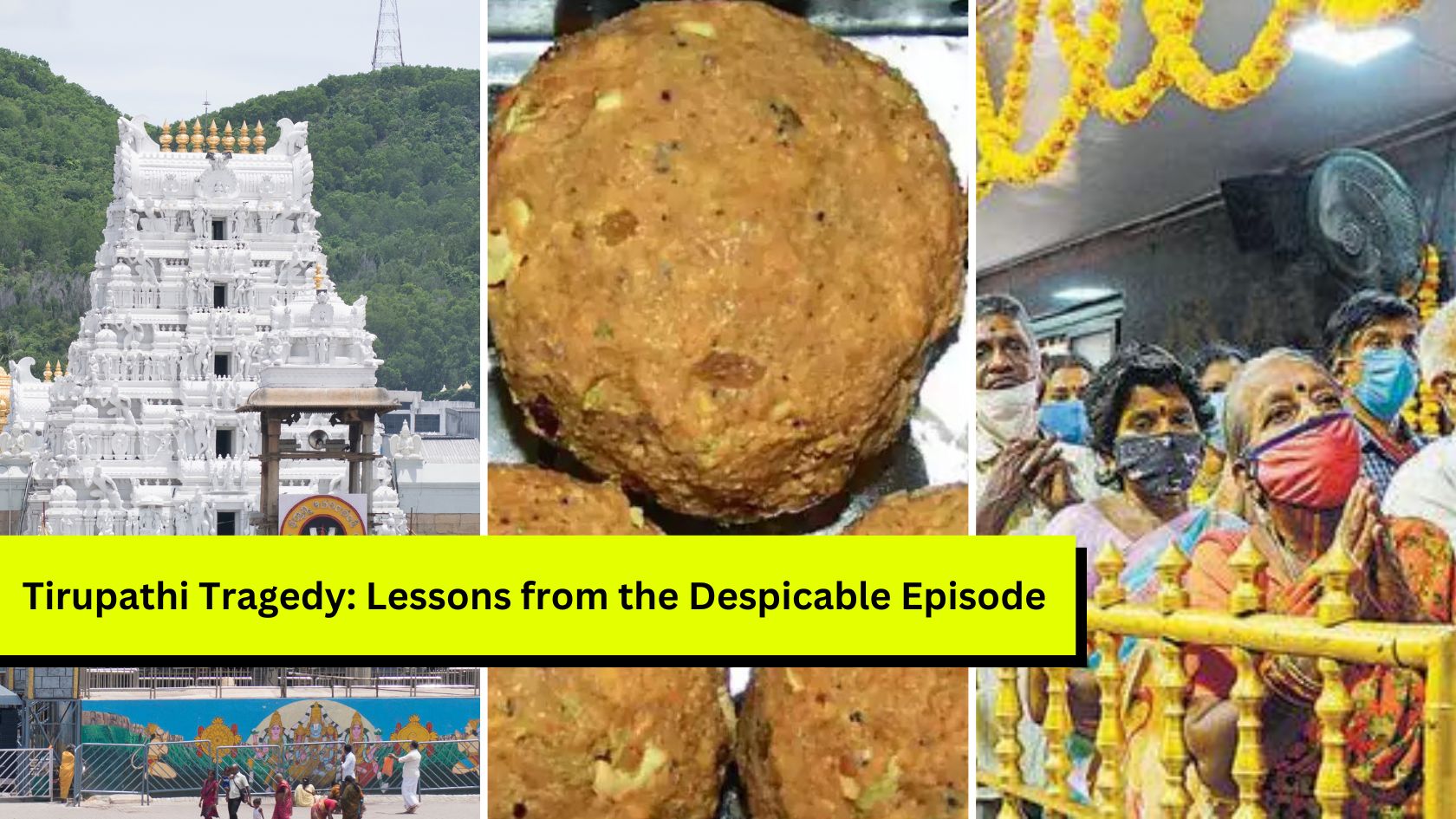
The Venkateshwara Swami Temple in Tirupati is among the holiest places in the world for Hindus. Millions of people throng the temple every year to get...
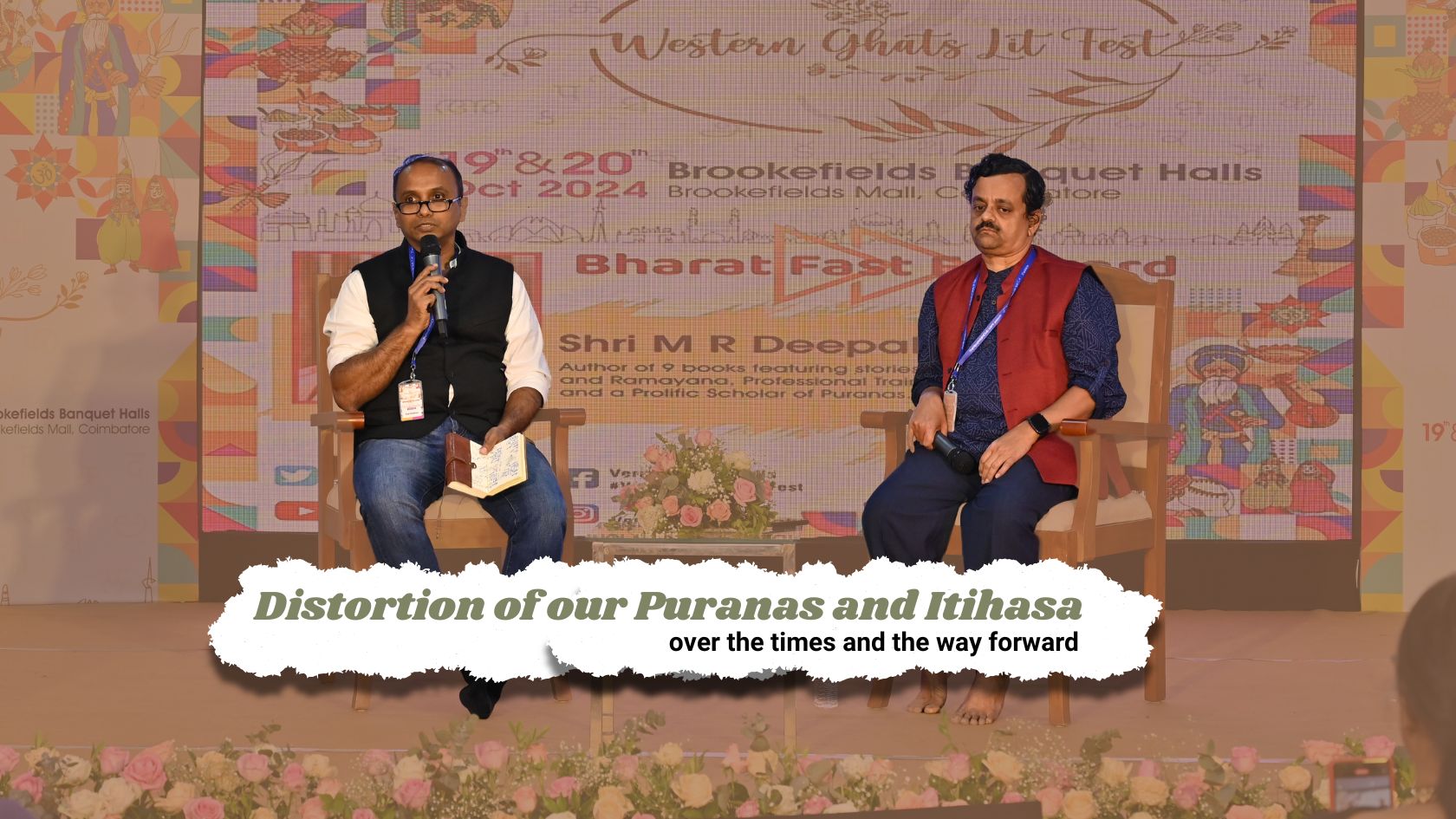
It is a sad reality that our Itihasa and Puranas have been subject to severe distortion over the years. This is not surprising considering how even th...

The holy land of Bharat follows Sanatana Dharma. The word Sanatana Dharma is a Sanskrit word meaning, “Eternal law”. It is the indestructible ultimate...